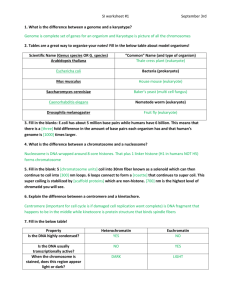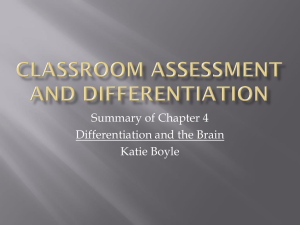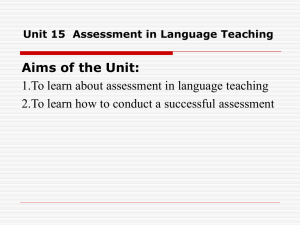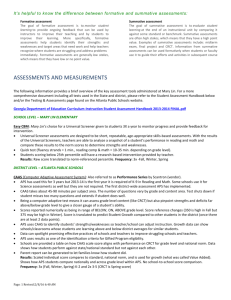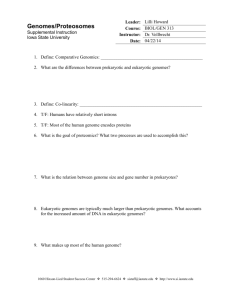Plan - the Biology Scholars Program Wiki
advertisement
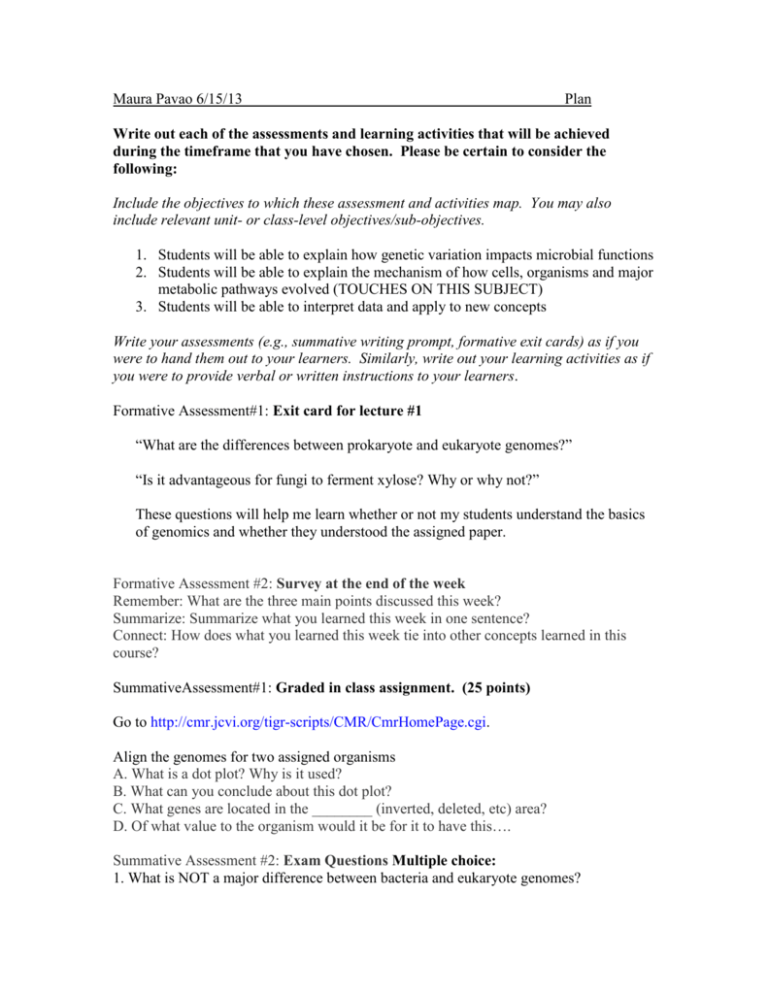
Maura Pavao 6/15/13 Plan Write out each of the assessments and learning activities that will be achieved during the timeframe that you have chosen. Please be certain to consider the following: Include the objectives to which these assessment and activities map. You may also include relevant unit- or class-level objectives/sub-objectives. 1. Students will be able to explain how genetic variation impacts microbial functions 2. Students will be able to explain the mechanism of how cells, organisms and major metabolic pathways evolved (TOUCHES ON THIS SUBJECT) 3. Students will be able to interpret data and apply to new concepts Write your assessments (e.g., summative writing prompt, formative exit cards) as if you were to hand them out to your learners. Similarly, write out your learning activities as if you were to provide verbal or written instructions to your learners. Formative Assessment#1: Exit card for lecture #1 “What are the differences between prokaryote and eukaryote genomes?” “Is it advantageous for fungi to ferment xylose? Why or why not?” These questions will help me learn whether or not my students understand the basics of genomics and whether they understood the assigned paper. Formative Assessment #2: Survey at the end of the week Remember: What are the three main points discussed this week? Summarize: Summarize what you learned this week in one sentence? Connect: How does what you learned this week tie into other concepts learned in this course? SummativeAssessment#1: Graded in class assignment. (25 points) Go to http://cmr.jcvi.org/tigr-scripts/CMR/CmrHomePage.cgi. Align the genomes for two assigned organisms A. What is a dot plot? Why is it used? B. What can you conclude about this dot plot? C. What genes are located in the ________ (inverted, deleted, etc) area? D. Of what value to the organism would it be for it to have this…. Summative Assessment #2: Exam Questions Multiple choice: 1. What is NOT a major difference between bacteria and eukaryote genomes? A. The eukaryote genome has a significantly larger presence of non-coding sequences. B. The bacteria genome has operons to coordinate expression of similar genes C. The bacteria genome contains multiple origins of replication D. The eukaryote genome has the presence of introns Short answer 1. How are bacteria, archaea and eukaryote genomes structured differently? 2. How does microbial evolution impact the microbes ability to adapt in its environment? 3. Of what value is a dot plot? Articulate the connections between your activities and assessments. In other words, how do your activities prepare students for the assessments, both formative and summative? Summative Assessment #1 is a similar exercise as the Alignment exercise done in class so the students have the foundation to answer the questions. However, students have to apply what they learned to a new situation. In which cases are assessments also your in- or out-of-class learning activities? The exit card will be done in class, and the final survey will be done out of class. They are not the central assignments. Describe how the choices you have made create a more learner-centered environment for your students There is no question that this exercise will be more learner-centered. I typically lecture with NUMEROUS slides covered in 50 minutes, and I allow the natural selection process to work; they either get it or don’t. I realized that the students are learning only to the test, and that what they learned in lab was retained much more than the lecture. Introducing exercises such as the comparative genomics and reading papers will allow students to integrate what they learned into practical applications. The paper I chose has an industrial application which may benefit the students because the majority enter the biotechnology work force in Massachusetts upon graduation.

